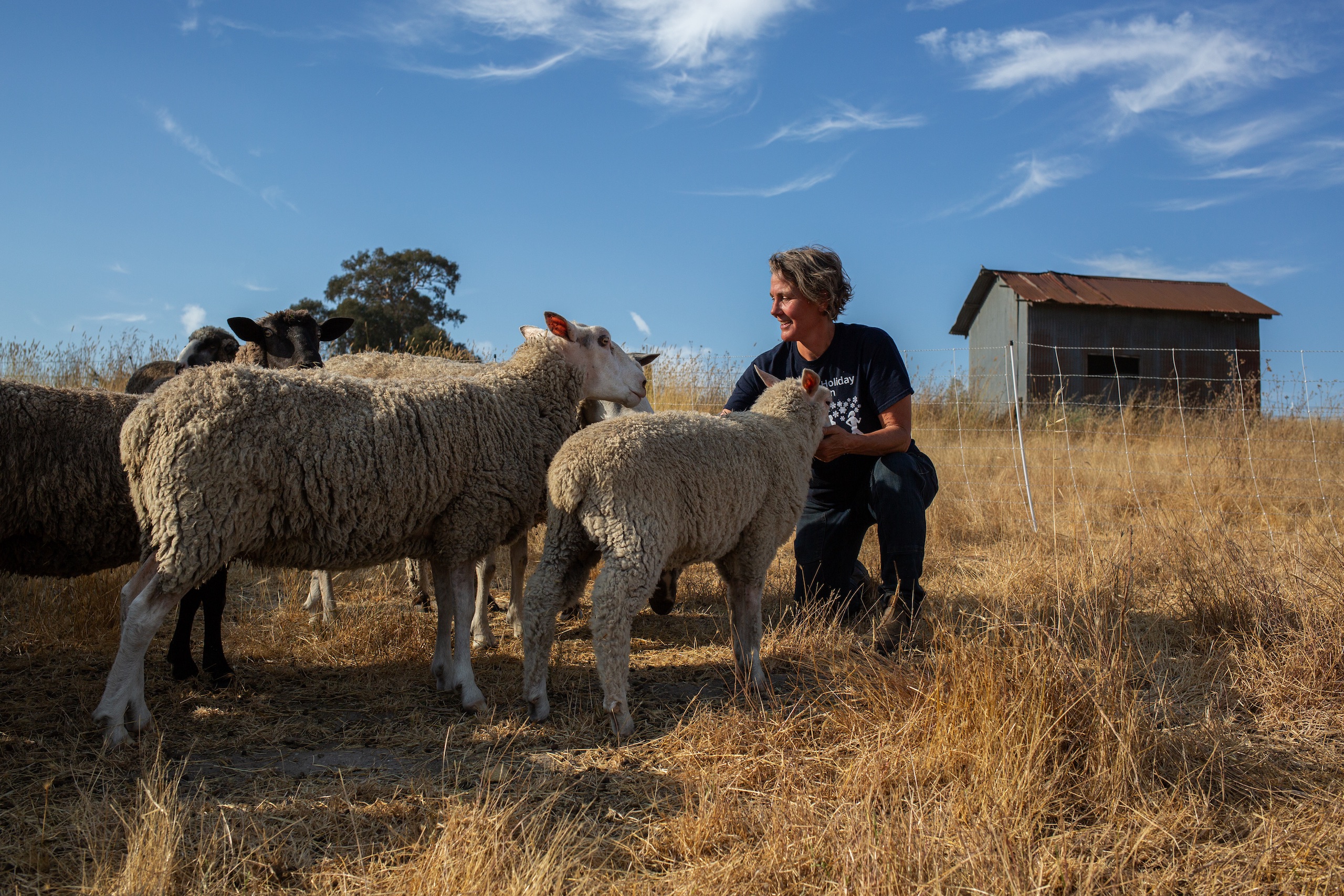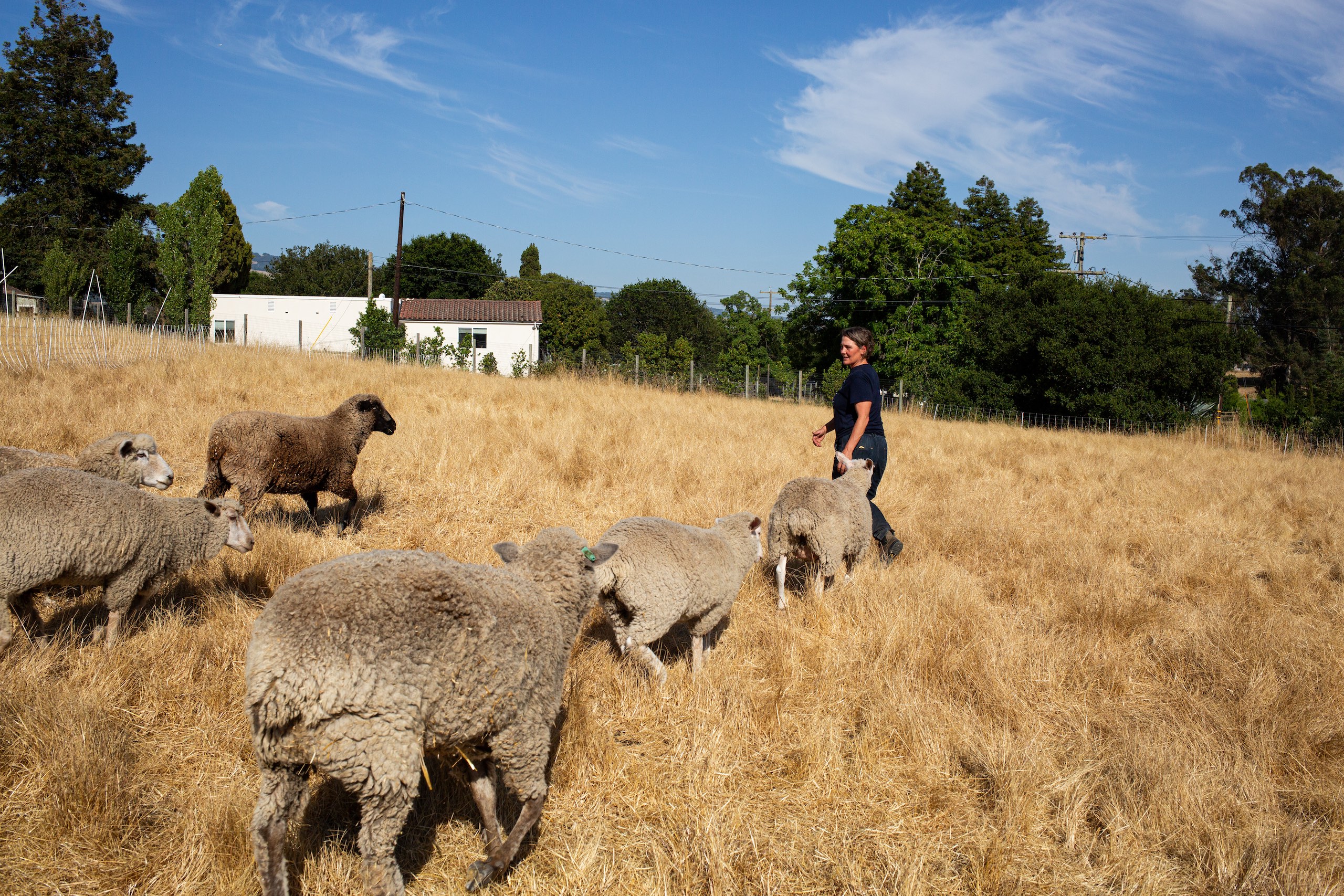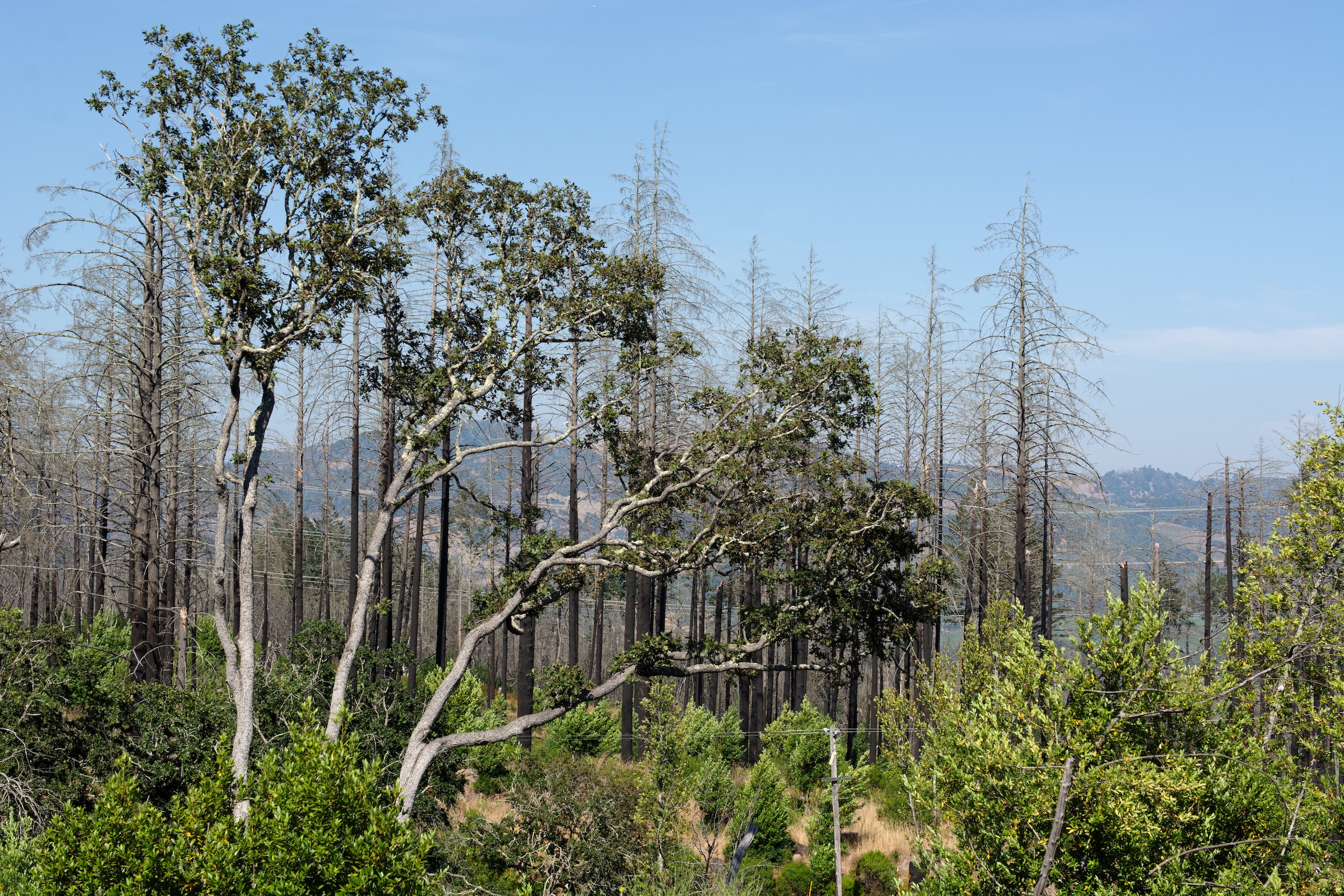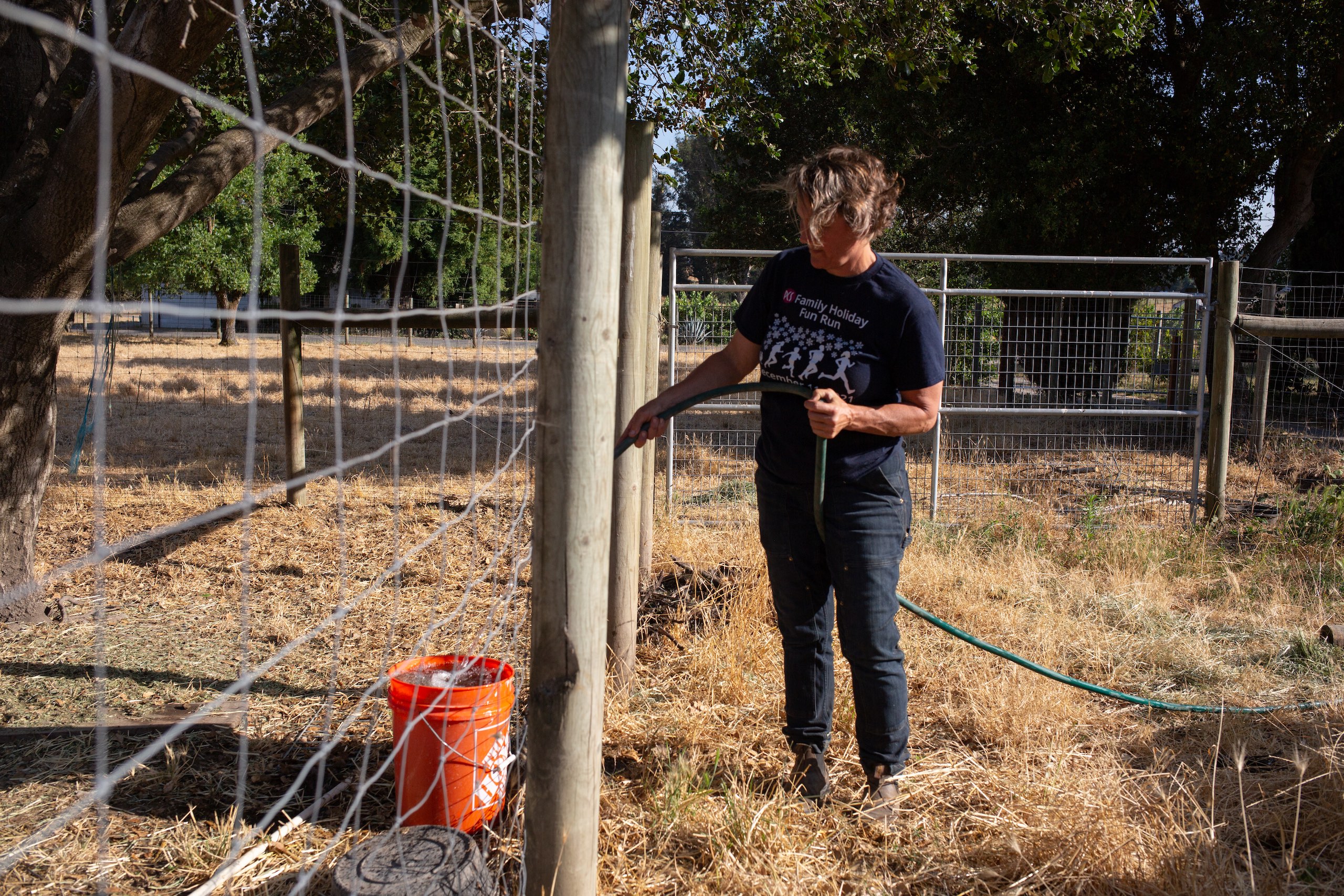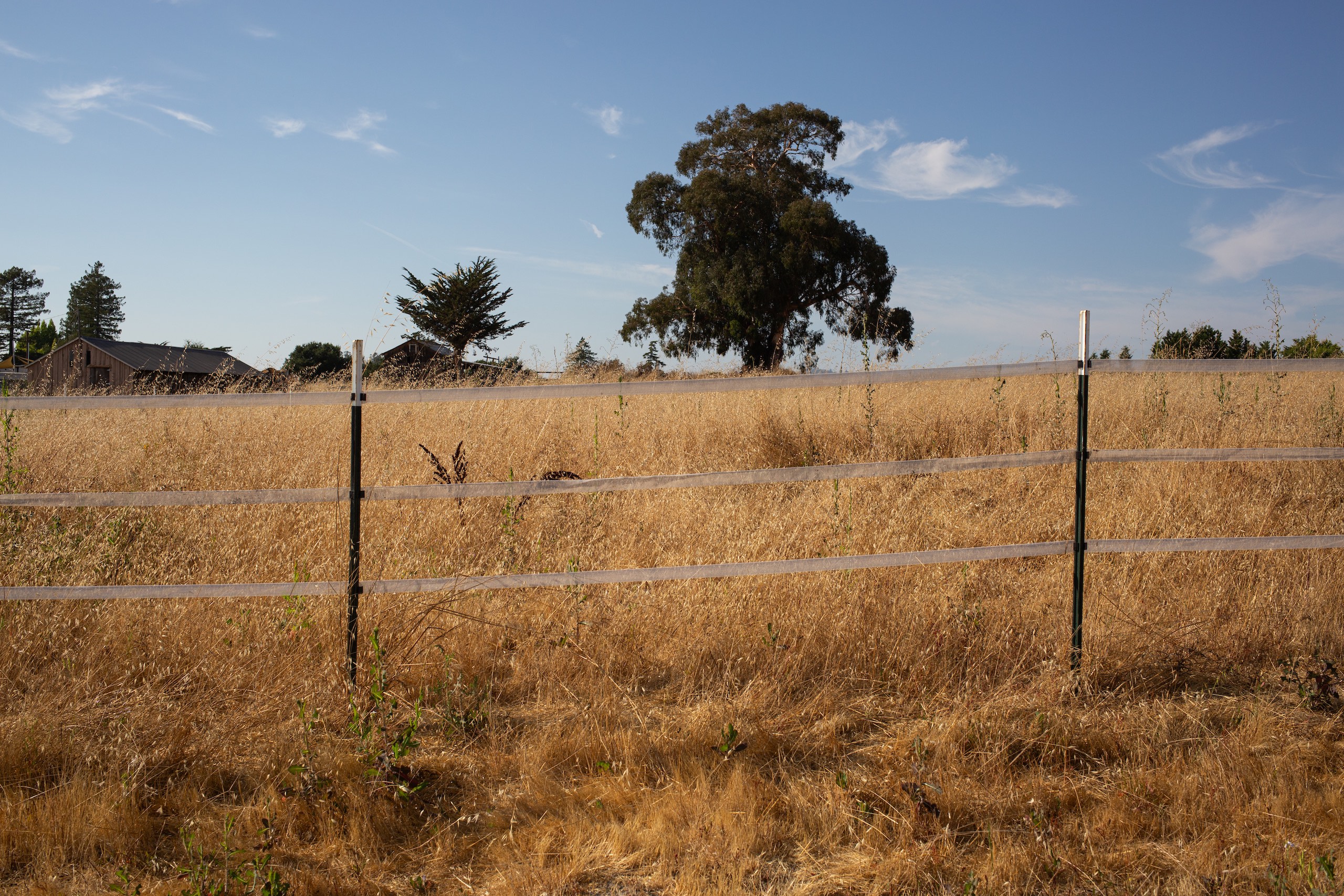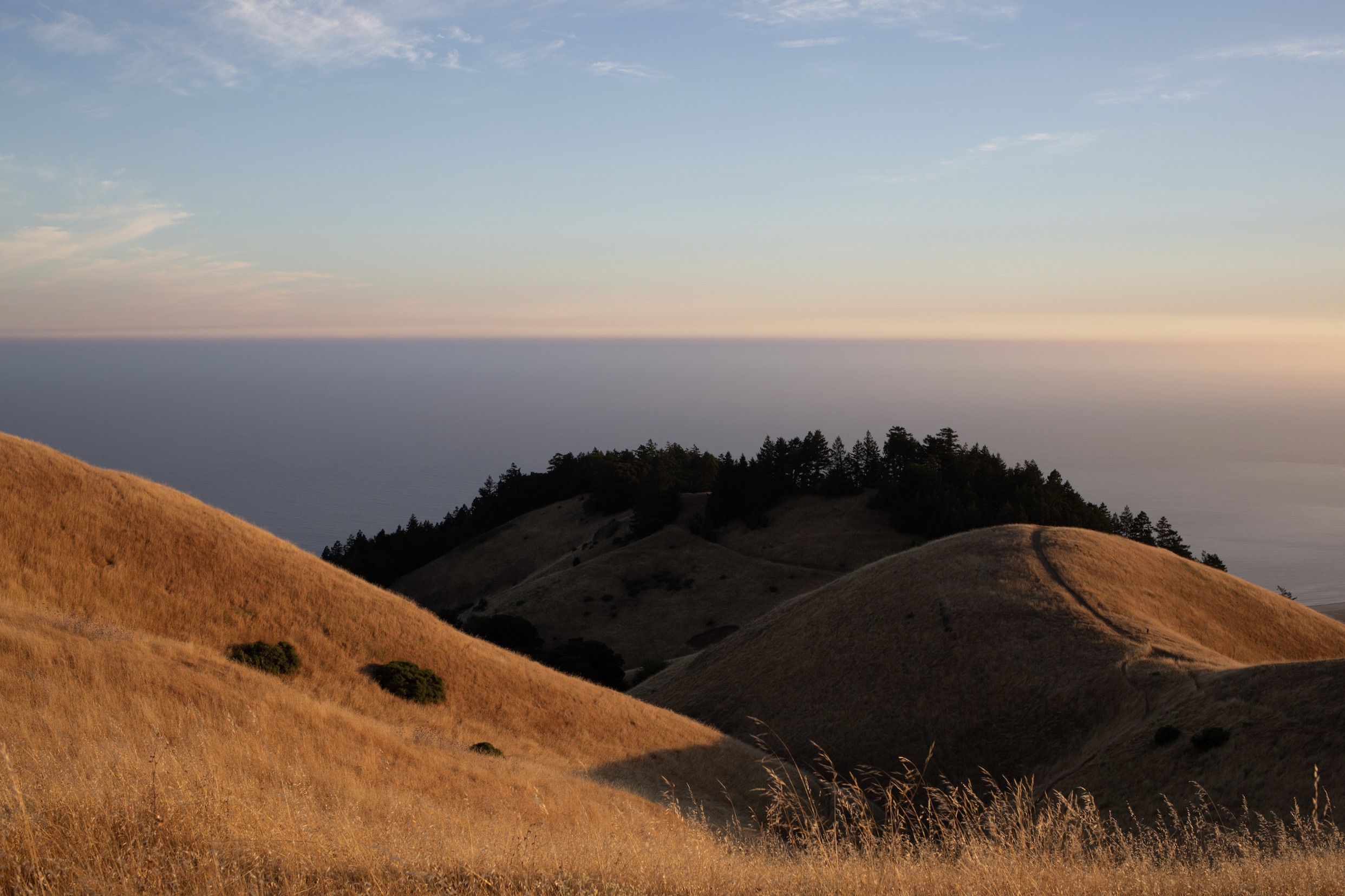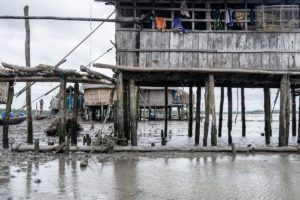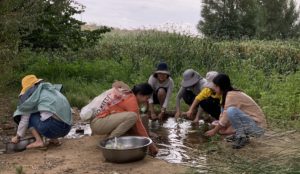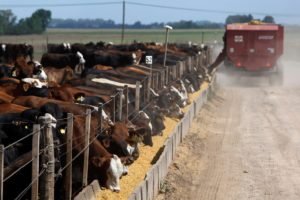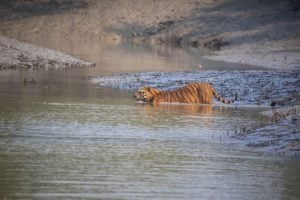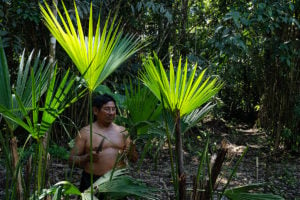The excited bleating of sheep crescendos as farmer Sarah Keiser approaches.
“Hi babies,” she says as she steps over a deactivated electric fence and greets the eager flock. It is late July, it hasn’t rained for two months, and the hills around the town of Penngrove, in northern California, have turned a dull brown.
But Keiser sees another colour.
“Look at all this green,” she says, walking with the sheep through the pasture.
Through a layer of dead grass, sprigs of lush wild radish and chicory are pushing up from the soil – the result of how Keiser manages her animals. She corrals them across the land in a strategic rotation, part of a regime broadly called prescribed grazing.
The sheep, she says, mimic the effects of wild ruminants, helping suppress invasive annual grasses while promoting the growth of natives and deep-rooted perennials. This can help sequester carbon in the soil, though some scientists have questioned how significant these gains really are. On the other hand, the fire safety benefits seem indisputable: by trimming chest-height weeds down to ankle-height tufts, grazers help reduce the spread of wildfire.
The potential of careful grazing
In 2017, a series of blazes devastated this region, just north of San Francisco Bay. The flames charred about 65,000 hectares of woodland, grassy hills and suburbs, forcing thousands to evacuate and incinerating entire neighbourhoods, as well as damaging infrastructure, livestock and crops. Penngrove was spared, but residents here remain on edge, increasingly alert to weather forecasts and overgrown vegetation that might feed a fire.
In fact, Keiser has entered into a cooperative relationship with several of her neighbours to allow her sheep to graze their properties, offering low-tech fire protection services. Everyone wins. Keiser’s flock has grown through this arrangement to 22 sheep, plus nine goats – more than her own family’s small plot of two acres could support.
The Penngrove Grazing Project, as the collaborative is called, has grown in tandem with others like it around California as communities and agencies embrace the role of careful grazing in landscape management and wildfire prevention. For reducing fuel loads, grazing herds are preferable in many ways to mechanical mowers and toxic herbicides. Co-benefits of prescribed grazing include the production of meat, milk, wool and fertiliser.
Wildfires in 2020 alone accounted for 30% of California’s greenhouse gas emissions. By reducing wildfire intensity, the practice could help curb these emissions, in turn mitigating the warming effects that aggravate wildfires in the first place.
California herders as firefighters
Already undergoing a renaissance, prescribed grazing could soon gain a policy-level push from a proposed law now under review in the California legislature. Introduced in February 2023, Senate Bill 675 would expand the definition of fire prevention activities to include prescribed grazing, and it would require California fire and forestry officials to consider it as an option for reducing wildfire hazards. Moreover, it would require the state government to develop a framework by 2025 for using prescribed grazing in and around fire-prone communities.
The US Department of Agriculture now recognises prescribed grazing as a “climate-smart mitigation activity”, indicating its potential suitability beyond California.
Advocates feel such action cannot come soon enough. Wildfires have become a terrifying scourge in California, where devastating infernos – fuelled by unnaturally dense shrubbery and forest understory layers – have burned millions of hectares in the past several years, turning thousands of homes to ash, and killing at least 150 people. Climate change has aggravated the situation, causing longer, more severe droughts and heatwaves that prime the landscape to burn.
Goats, sheep, and cows could help nip the problem to the root.
“There’s a lot of fuel out there, in the forests and grasslands, and animals could be a huge part of eliminating that,” said northern California herdsman Leland Falk, who runs about 1,000 sheep on the prairies and woodlands of California’s remote North Coast region.
California is already home to millions of domestic ruminants. However, grazing as a strategic land management practice is lightly applied.
“We’ve used grazing animals for a long time, but not in this targeted way,” said Amber Schat, wildfire resilience specialist for Community Alliance with Family Farmers, a California-based NGO.
Funding dedicated to land and wildfire management rarely goes to grazing projects. In the 2020–21 fiscal year, only four of 105 state grants for preventing Californian wildfires included grazing options, according to the California Climate and Agriculture Network.
Molly Taylor, the climate smart agriculture program manager with the Community Environmental Council, in Santa Barbara, said Senate Bill 675 could help integrate prescribed grazing into existing fire funding programmes. She said the current dearth of attention toward managed grazing stems from several issues. For one thing, wildfire managers simply aren’t equipped or trained to promote or arrange grazing activities. Also, available herds and skilled animal handlers are hard to come by in California.
“There’s a lack of shepherds who are trained to do this work,” she said.
Grassroots cooperatives step up
Grazing operations, which sometimes consist of trucking the animals, fencing them into targeted sites, and providing water, can also be expensive. That’s why Falk wants the government to step up and develop a rigorous funding programme to support widespread community grazing activity. He envisions a state-wide system by which neighbouring rural and suburban properties form registered collectives that are grazed at least once per year by sheep or goats, with the government covering all expenses. Ideally, the properties would form a contiguous space, eliminating the need for regular vehicle transport.
“If you can just graze your way across the properties, it cuts down your costs and is much more efficient,” he said.
In fact, this model of grazing is taking shape, emerging with grassroots collaboratives like Keiser’s, as well as Herding Hope, the Ojai Valley Fire Safe Council, and many more. In some areas, like Sonoma County, local agencies are pitching in for costs on electric fencing, watering troughs, and other basic components of a prescribed grazing operation.
Another distinct model for prescribed grazing is that of contract grazers, whereby shepherds and their animals are hired for one-time or recurring jobs, with the animals usually delivered by truck to the grazing site for a temporary stay.
Keiser noted that establishing a shared-labour community grazing system involves investment primarily on the front end, and mostly returns on the back end.
“If we just put a little time and effort into the infrastructure, the grazing is something that is ongoing in perpetuity,” said Keiser, who recently submitted a grant proposal to the state, seeking $4 million to help scale up her grazing programme. “It resolves your problems.”
Prescribed burning and its risks
The push to expand prescribed grazing comes as California refines its troubled relationship with fire. For centuries, Indigenous Californians used fire as a stewardship tool. By setting the forest floor alight at routine intervals, they kept wooded areas clear of brush, dead grasses, and debris. This made travelling, hunting, and foraging easier, and it reduced the risk of intense, destructive wildfires.
European Americans ended the Indigenous use of fire in much of the West. They initiated a regime of aggressive fire suppression that would, over many decades, allow a dangerous build-up of flammable debris and, eventually, backfire catastrophically. In the past decade, huge and fast-moving megafires have become annual occurrences in the American West. Desperate for solutions to this climate crisis, land managers are backpedalling, reintegrating the use of fire into land management and state policy.
But prescribed burning comes with risks. Last fall, a managed burn in Calaveras Big Trees State Park, home to some of the largest trees on Earth, allegedly caused serious damage to a pair of giant sequioa trees, sparking controversy over the use of fire as a forest protection tool.
Schat, at the Community Alliance with Family Farmers, said prescribed burning is an important tool but that grazing animals can be a safer alternative.
“Animals don’t start fires,” she said.
Livestock can also graze difficult terrain that’s mostly inaccessible to people and vehicles, and by disturbing and fertilising plants, grazing animals stimulate root growth, which adds carbon to the soil – an important climate gain. Sometimes, prescribed grazing is used as a pre-treatment for prescribed burns, reducing the amount of flammable debris lying in their paths.
More good than harm?
Grazing isn’t a panacea, though. To protect their assets, ranchers have helped lead the eradication of apex predators like big cats, wolves, and bears from much of the world. Their herds can denude hillsides and turn streams into muddy slurries. Concentrated manure can produce nitrate that pollutes drinking water. Sheep and cattle are notorious methane emitters and are considered a significant contributor to climate change.
“Anytime you have a bunch of herbivore hooves on the ground, you are creating a disturbance,” said Byron Palmer, a grassland manager with the Sonoma Mountain Institute, an organisation based about 40 miles north of San Francisco.
Palmer runs 1,700 cattle on roughly 2,700 hectares. The animals are fenced out of waterways and are moved strategically around each property, limiting the time spent on any piece of ground.
Palmer believes cattle, goats, and sheep can do much more good than harm if carefully managed and prevented from concentrating in sensitive habitats.
“In California, there were once as many large megafauna as there are cattle today, and the overall ecological health of our streams and our riparian zones was what we aspire to today,” Palmer said.
More animals, not fewer, are needed, he said, describing the amount of work to be done in reducing California’s overgrown vegetation fuel load as “infinite.”
In Penngrove, demand for Keiser’s grazing services continues to grow. Recently, a next-door neighbour asked if her sheep could take on his overgrown field of weeds. Standing at the fence line, Keiser gazes north, over the chest-height wild oats – a clear fire risk – and into the distance, toward the hills where flames tore through the night six years before.
She shrugs. “I need more sheep.”
This article is also published on New Security Beat as part of the Wilson Center-Ohio State University Cultivating US and Chinese Climate Leadership on Food and Agriculture Project
